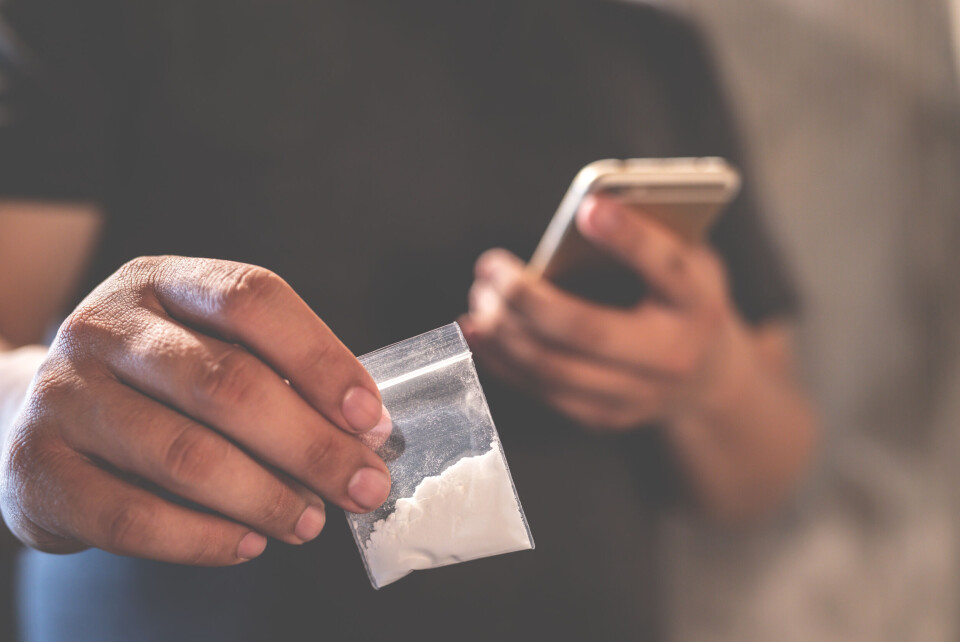-
French nature festival is a paradise for bird watchers
The spring event runs from April 12-20, showcasing the rich flora and fauna of the Baie de Somme
-
D-Day silhouettes overlooking the British Normandy Memorial return for a second year
‘I don’t think anyone could walk through without getting a real sense of respect for the soldiers who died here’
-
Local election rule changes in France and why you may have a new mayor in 2026
Communes with fewer than 1,000 residents are particularly set to see changes from next year
Cocaine-related A&E admissions in France soar
The sharp rise in emergency admissions for cocaine comes as production of the drug soars in Europe

Cocaine-related admissions to emergency departments in France have soared in France in the last 12 years, a new report shows.
There were 8.6 per 100,000 admissions in 2010, rising to 21.2 last year.
This means that each week in 2022 there were 72 admissions to A&E for cocaine-linked reasons.
The figures come from a study by l’Observatoire français des drogues et des tendances addictives (OFDT).
The number of people being admitted to prevention and addict centre the Centre de soins, d'accompagnement et de prévention en addictologie (CSAPA) also rose from 2015 to 2019.
There was also a significant rise in the number of people admitted to A&E between 2021 and 2022, after a relatively stable period from 2018 to 2021, said the OFDT.
Key statistics include:
-
Between 2010-2022, there were 23,335 admissions to A&E for cocaine
-
75% of these were men
-
The median age was 32
-
65% were due to an overdose, 13% due to addiction, and 7.5% due to withdrawal symptoms
-
In 2010, there were 4,832 hospital stays related to cocaine and 2,613 requests for treatment
-
In 2021, there were 20,198 stays and 5,907 requests for treatment
-
Cocaine-related admissions rose from 8.6 per 100,000 in 2010 to 21.2 in 2022
Regional differences
There were some noticeable regional differences in terms of the numbers of A&E admissions related to cocaine.
In mainland France, Provence-Alpes-Côte d’Azur and Occitanie were the most-affected regions (40.8 admissions per 100,000, and 27 per 100,000 respectively).
However, when it comes to significant rises in admissions from 2010-2022, these were seen in:
-
Auvergne-Rhône-Alpes (1.2 to 22,9 per 100 000 admissions)
-
Brittany (4.3 to 34.4)
-
Nouvelle-Aquitaine (3 to 20.6)
-
Grand Est (8.7 to 19.9)
-
Bourgogne-France-Comté (2.9 to 13.1).
Other drugs
Admissions to A&E were often seen among patients who had also taken other drugs than cocaine, including:
-
Alcohol (33%)
-
Benzodiazepam (9.6%)
-
Cannabis (9.5%)
-
Opioids (4.8%)
Santé Publique France (SPF) has found that taking cocaine with alcohol increases the risk and impact of psychological and cardiac problems.
Rise in calls about cocaine
The figures from the report concur with trends reported by the helpline Drogues Info Service, which has said that the number of people looking for help has increased since 2010.
The number of calls, chats, and Q&As about cocaine has risen from 2,133 per year on average in 2010, to 6,447 in 2022.
Most calls are related to a poor mental or physical state, often with major anxiety over symptoms and difficulties in stopping taking the drug, it said.
The service can be reached anonymously seven days a week by phone (0800 23 13 13) in France from 08:00 to 02:00 or via its website. It helps to offer personalised information and help to anyone struggling with drug-related issues.
Production increasing
Several indicators suggest that cocaine consumption (and its worldwide production) is increasing.
In its report, the OFDT said that cocaine represents a third of the stimulant trafficking market in Europe, and the quantity of production worldwide has risen from 1,134 tonnes in 2010 to 1,982 tonnes in 2020.
In France, 27.7 tonnes of cocaine were seized by law enforcement in 2022, versus 10.8 tonnes in 2011.
This growing production has made the drug easier to come by, the OFDT said, and reduced its price (currently around €50-70 per gram in France). More criminals and networks are becoming involved in the drug, and social media and the dark web have enabled trafficking to spread, and develop new ‘services’ such as at-home delivery.
Worldwide, cocaine is the most-consumed illicit drug after cannabis, and estimates suggest that user numbers have soared from 14 million worldwide in the 1990s to 21.5 million in 2020.
France is one of the biggest users, it said, with an estimated 600,000 users annually, versus 5 million cannabis users and 400,000 for MDMA/ecstasy.
The main users are adults, rather than teenagers. Adolescent consumption dropped between 2014 to 2022, while use among adults rose.
And while cocaine used to be seen only as a “rich person’s drug”, figures suggest that it is now spreading to other social classes, especially via different forms of usage, including smoking (crack) or by injection.
Related articles
Cocaine bags continue to be found washed-up on beaches in Normandy
Calls for harder line on drug driving after French actor’s crash
























